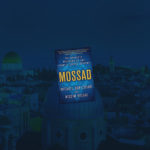ISIS Expands Its Threats to Major Cities with Clear Significance.
Images threatening attacks in London and Washington D.C., as well as, other major world capitals have surfaced. According to SITE Intelligence Group, images have been posted to a jihadi messaging app called Telegram.
This warning comes in the wake of numerous attacks in France and Germany this month and a total of 19 separate terror attacks in Europe this year.
The U.S. capitol remains a high value target, the yet-unclaimed prize, a city emblematic of democracy, and the one that got away (referring to the partially thwarted 9/11 attack). Michael Rolince, a former high-ranking FBI counterterrorism official knows how difficult the city is to protect—due to a vast number of different agencies and jurisdictions and, “just because of what the city is, what it represents, who’s here and who travels here, and how the world views Washington, D.C. It is markedly difficult and markedly different than most other major American cities.”
According to chairman of the House Homeland Security Committee Michael McCaul, “We’ve stopped several plots against the Capitol.” One case reportedly involved pipe bombs and AK-47s; another had drones carrying explosives. McCaul confirms there have been other, more recent plots, but the details remain confidential.
Officials from the Joint Terrorism Task Force (JTTF) scrupulously study the anatomy of terror related attacks. The November 2015 Paris attacks revealed a critical piece of evidence—cell members were communicating via video game messaging. This way of communicating, along with encrypted cell phones, makes plot detection much more difficult.
So what is being done to protect the homeland? Broadly speaking, the U.S. has doubled its defense spending from $25 billion (in the Cold War era) to $50 billion (post 9/11)—largely on creating or expanding agencies, increasing our technical capabilities, and training. But most experts agree: bureaucracy is hardly the solution and point out that no attacks have been intercepted by defensive measures, such as detectors, screenings and patrols.
Counterterrorism expert Michael Sheehan says aggressive intelligence operations are key to breaking up plots before they are launched. Only with spies will we have access to the types of intelligence that serve to thwart attacks. Given the terrorists increasingly sophisticated methods of communication, he has largely been proven right.
Though cultivating undercover intelligence operatives is not only time consuming, it comes with a host of challenges—not the least of which is finding suitable candidates with the right background and language skills necessary to infiltrate these communities.
Even those on board with the ‘best defense is a good offense’ theory recognize that the world has changed yet again. As our tactics were forced to change with the emergence of asymmetrical warfare first demonstrated by the bombing of the USS Cole and later with 9/11, we are left to ponder how to protect citizens amid the growing threat of lone wolf attacks.
Is the threat against Washington D.C. real? Is it a coordinated attack that could be detected and thwarted? Or is this threat a propaganda piece meant to inspire radicalized individuals acting alone, focusing on soft targets in our nation’s capitol—leaving private citizens to defend themselves and their loved ones?
Given the current state of affairs in Europe, the ‘best defense is a good offense’ ought to be the mantra of private citizens everywhere.




